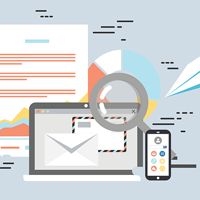Intellectual property protection for scholarly publishing in the Italian framework: a globally open approach for medical and life sciences authors

HTML: 19
All claims expressed in this article are solely those of the authors and do not necessarily represent those of their affiliated organizations, or those of the publisher, the editors and the reviewers. Any product that may be evaluated in this article or claim that may be made by its manufacturer is not guaranteed or endorsed by the publisher.
Authors
This paper aims at analyzing the importance of protection of intellectual property (IP) in biomedical scholarly publications, both for the author's reputation and the dissemination of scientific knowledge. The laws that regulate IP are very complex and differ from country to country. We shall focus on the Italian framework though many considerations could be applied to foreign contexts. IP is very articulated, yet often ignored, that is worth paying attention to a correct copyright management can help researchers promote their Work and the community to benefit from it. In the scholarly publishing field, there are two main areas: traditional publishers and open-access publishers. The first group requires a fee to access the content they publish and usually ask the authors for a complete transfer of copyright. The possibility to negotiate terms with such publishers is often overlooked: scholarly authors tend to think they do not have leverage in the publishing cycle. The so-called addendum and professional figures, like librarians and attorneys, can help manage the authors' intellectual property. On the other hand, open-access publishers give free access to published material, guaranteeing the protection of IP: thanks to the Creative Commons Licenses, the authors do not have to surrender their copyright to the publisher and can manage and control the use made out of their Work. Applying the principles put forth in this article implies enhancing research dissemination by increasing its impact and visibility. However, to achieve such a goal, it is necessary to protect intellectual property for the sake of authors, users, and scientific progress.
University of Padova, V. Pinali Biomedical Library
How to Cite

This work is licensed under a Creative Commons Attribution-NonCommercial 4.0 International License.
PAGEPress has chosen to apply the Creative Commons Attribution NonCommercial 4.0 International License (CC BY-NC 4.0) to all manuscripts to be published.

 https://doi.org/10.4081/itjm.2021.1473
https://doi.org/10.4081/itjm.2021.1473



